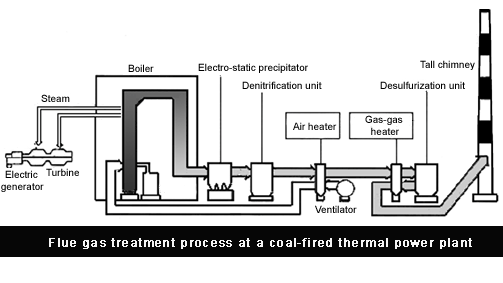Coal stack gas treatment technologies intensify as industrial processing becomes larger and larger, and the regulations that determine the maximum contaminants that can be discharged through the air have become more and more tight. One of the areas that this affects strongly is the area of stack gas discharge, and the treatment of it. In the past, it was often acceptable to allow the gas from flues to be discharged directly into the air, but regulations now mandate that the level of many contaminants be reduced through pollution abatement techniques. One of these methods is counter current air/ water adsorption, where the contaminants in the air are adsorbed by a water stream moving in the opposite direction. The initial level of purity of the water directly affects the final level of purity of the gas, so purity is very important.

In a typical treatment process, the flue gas, which contains substances such as coal ash (fly ash), nitrogen oxides (NOx), and sulfur oxides (SOx), is sent to an electro-static precipitator that removes ash particulates and then to a denitrification unit that removes nitrogen oxides. The high-temperature flue gas is then channeled to the air heater where heat exchange is performed with inducted fresh air so that it can be sent to the boiler. Due to this heat exchange, the heat of the flue gas can be effectively utilized. After the heat of the flue gas has been transferred to the fresh air, it is sent to the gas-gas heater where heat exchange is performed again with the flue gas sent to the chimney and then it is channeled to the desulfurisation unit. Then, after the sulfur oxides have been removed by the desulfurisation unit, the flue gas passes back through the same gas-gas heater to be exhausted from the chimney.
